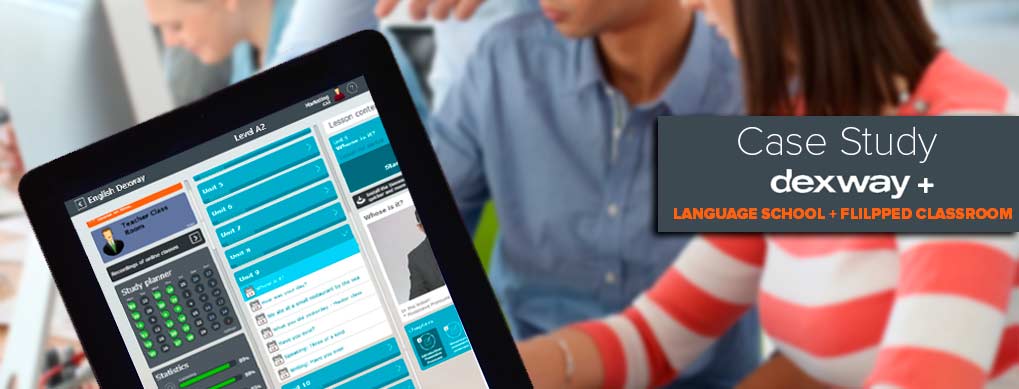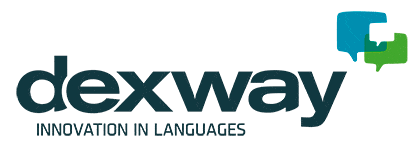The extensive expertise has allowed CAE to support many language centers who are trying to go digital and become more profitable through successful configurations. With those objectives in mind, Dexway flipped classroom centers are an option that modifies the business model by integrating flipped classrooms as the center’s trademark. These centers reap all the benefits of applying flipped classrooms to language learning and the cutting-edge technology of the Voluxion platform in day-to-day management.

CHALLENGE
A traditional language center with three locations needed to increase its profitability while digitally transforming its business and updating a 20-year trajectory. It was starting to fall behind due to not being able to respond to the interactive demands of its potential students.
After a consultation with Dexway experts, the leaders in e-learning and digital transformation, the following needs were detected:
- An LMS platform (Learning Management System) to digitize and automate the center’s administration duties.
- A web portal where the center’s brand will be quickly differentiated.
- A system that will make it easy to receive more students without having to increase resources (classrooms, teachers, schedules).
- Interactive content on an LMS platform or web platform that includes specialized tools for languages such as VCR for online classes.
SOLUTION
- Implement Voluxion Platform with VCR and automated class reservations
- Apply a flipped classroom method
- Offer multilevel Dexway courses where students can advance at their own pace
In addition to the online course (which would be followed up by the assigned tutors), various classes would be offered. CAE’s proposal included three possible configurations, from highest to lowest profitability, all within the range the center requested:
1) 12 individual or group face-to-face classes + unlimited online classes in small groups with a maximum of seven students. This would be the most profitable choice for the center since fewer students could abuse the unlimited class feature.
2) 24 group or individual face-to-face classes + 52 online classes in small groups of up to seven people.
3) 48 group or individual face-to-face classes + 52 online classes in small groups of up to seven people (1 online class and 1 face-to-face class each week is the least profitable option for the center).
The language center decided to start with an intermediate configuration of 24 face-to-face classes and 52 online classes. That way, the students would have, on average, a weekly online commitment and they would also have to attend two classes per month at the center.
During the course, additional lessons for specific sectors (depending on students’ interests) would be included as available online classes to take.
The courses would be multilevel and last 12 months. The student can progress as far as they want and attend certain face-to-face or online classes every month. An annual advanced payment (in cash or financed per month) was recommended.
DIFFERENCES BETWEEN COMPETITORS
#1 A flipped classroom allows a smaller number of classes and class timetables.
#2 Greater ease of learning with various levels.
#4 Flexible timetables and the ability to attend classes with a teacher.
#4 Classes with teachers: face-to-face and online.
#5 Classes are hands-on and learning happens quicker.
#6 The classes are not theoretical, but instead practical.
#7 Students who are lagging behind may spend more time.
#8 Unlimited amount of time.
#9 Students who can spend more time on the course will learn more.
#10 Unlimited growth.
#11 Individual or small group classes, with flexible timetables that the student can book via the internet.
#12 Classes are face-to-face at the center or online, as desired by the student. If the center wants, it can offer both options for its students. If you have several centers, allow students to choose which center they would like to take classes at.
You may also like:
- Case Study: International company in the beverage industry establishes two language plans with Dexway
- Case Study: Dexway implemented an e-learning plan at an international TSP company
- Case Study: Retail Establishes a Successful Language Action Plan with Dexway Authoring Tool

